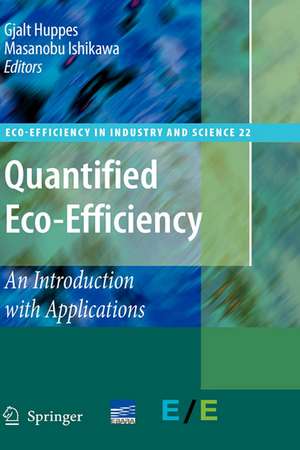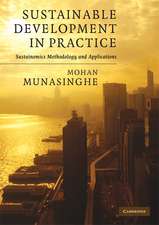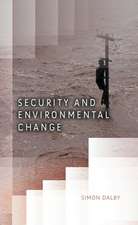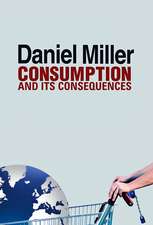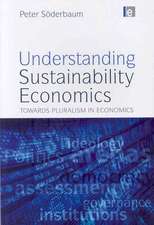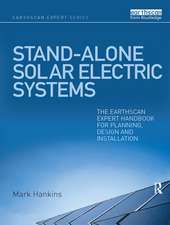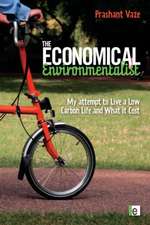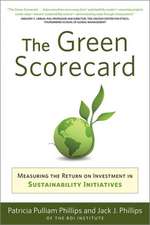Quantified Eco-Efficiency: An Introduction with Applications: Eco-Efficiency in Industry and Science, cartea 22
Editat de Gjalt Huppes, Masanobu Ishikawaen Limba Engleză Hardback – 9 ian 2007
A substantial Japanese paper on Maximum Abatement Cost method and a paper on revealed public preferences in The Netherlands comprise the first section on methods. Next, there are four sections on domains of application of eco-efficiency analysis. In the Agriculture section, a case on conservation agriculture in China is worked out, using input-output analysis. In the Industry section, cases range from supply chain management to waste water management and methods to speed up innovation. In the Products & Consumption section, cases refer to overall household performance, specific energy products and methods for upgradeable product design. Finally, in the Recycling section, cases relate to increasing the supply of secondary materials and to increasing secondary materials use.
| Toate formatele și edițiile | Preț | Express |
|---|---|---|
| Paperback (1) | 1382.37 lei 43-57 zile | |
| SPRINGER NETHERLANDS – 20 noi 2010 | 1382.37 lei 43-57 zile | |
| Hardback (1) | 1388.53 lei 43-57 zile | |
| SPRINGER NETHERLANDS – 9 ian 2007 | 1388.53 lei 43-57 zile |
Din seria Eco-Efficiency in Industry and Science
- 9%
 Preț: 901.53 lei
Preț: 901.53 lei - 18%
 Preț: 951.29 lei
Preț: 951.29 lei - 15%
 Preț: 640.24 lei
Preț: 640.24 lei - 15%
 Preț: 654.77 lei
Preț: 654.77 lei - 15%
 Preț: 648.42 lei
Preț: 648.42 lei -
 Preț: 391.61 lei
Preț: 391.61 lei - 15%
 Preț: 642.51 lei
Preț: 642.51 lei - 15%
 Preț: 643.34 lei
Preț: 643.34 lei - 18%
 Preț: 957.62 lei
Preț: 957.62 lei - 18%
 Preț: 953.35 lei
Preț: 953.35 lei - 18%
 Preț: 1238.74 lei
Preț: 1238.74 lei - 18%
 Preț: 1224.68 lei
Preț: 1224.68 lei - 18%
 Preț: 963.15 lei
Preț: 963.15 lei - 18%
 Preț: 2115.07 lei
Preț: 2115.07 lei - 18%
 Preț: 1855.88 lei
Preț: 1855.88 lei - 18%
 Preț: 1234.94 lei
Preț: 1234.94 lei - 15%
 Preț: 643.00 lei
Preț: 643.00 lei - 15%
 Preț: 647.40 lei
Preț: 647.40 lei - 18%
 Preț: 1222.01 lei
Preț: 1222.01 lei - 15%
 Preț: 637.59 lei
Preț: 637.59 lei - 15%
 Preț: 648.42 lei
Preț: 648.42 lei - 15%
 Preț: 646.62 lei
Preț: 646.62 lei - 15%
 Preț: 645.79 lei
Preț: 645.79 lei - 20%
 Preț: 590.95 lei
Preț: 590.95 lei
Preț: 1388.53 lei
Preț vechi: 1693.34 lei
-18% Nou
Puncte Express: 2083
Preț estimativ în valută:
265.73€ • 276.40$ • 219.37£
265.73€ • 276.40$ • 219.37£
Carte tipărită la comandă
Livrare economică 14-28 aprilie
Preluare comenzi: 021 569.72.76
Specificații
ISBN-13: 9781402053986
ISBN-10: 1402053983
Pagini: 342
Ilustrații: X, 332 p.
Dimensiuni: 155 x 235 x 23 mm
Greutate: 0.66 kg
Ediția:2007
Editura: SPRINGER NETHERLANDS
Colecția Springer
Seria Eco-Efficiency in Industry and Science
Locul publicării:Dordrecht, Netherlands
ISBN-10: 1402053983
Pagini: 342
Ilustrații: X, 332 p.
Dimensiuni: 155 x 235 x 23 mm
Greutate: 0.66 kg
Ediția:2007
Editura: SPRINGER NETHERLANDS
Colecția Springer
Seria Eco-Efficiency in Industry and Science
Locul publicării:Dordrecht, Netherlands
Public țintă
ResearchCuprins
An introduction to quantified eco-efficiency analysis.- An introduction to quantified eco-efficiency analysis.- General Methods.- Maximum abatement costs for calculating cost-effectiveness of green activities with multiple environmental effects.- From thermodynamic efficiency to eco-efficiency.- The price of toxicity. Methodology for the assessment of shadow prices for human toxicity, ecotoxicity and abiotic depletion.- Cases in Agriculture.- Conservation reconsidered: a modified input-output analysis of the economic impact of China’s land conservation policy.- Cases in Industry.- Eco-efficiency in redesigned extended supply chains; furniture as an example.- Practical experiences with reducing industrial use of water and chemicals in the galvanising industry.- Cost-efficient solutions can speed up ecological (and social) development – A proposal.- Cases in Products and Consumption.- Environmental performance of households.- Eco-efficiency analysis of an electrochromic smart window prototype.- Upgrade planning for upgradeable product design.- Cases in Recycling.- A strategic policy model for promoting secondary materials use.- Eco-efficiency analysis of the plastic recovery systems in Hyogo eco-town project.
Notă biografică
Gjalt Huppes is head of the Industrial Ecology Department and associate professor of environmental system sciences at the Institute of Environmental Sciences (CML) at Leiden University in Leiden, the Netherlands.
Masanobu Ishikawa is a professor at the Graduate School of Economics at Kobe University in Kobe, Japan.
Masanobu Ishikawa is a professor at the Graduate School of Economics at Kobe University in Kobe, Japan.
Textul de pe ultima copertă
Eco-efficiency has long been a concept: the intention of reducing environmental impact while increasing environmental value. Its origins are with the World Business Council for Sustainable Development. However, in a globalized world with sustained economic growth environmental degradation is threatening. Macro level requirements on sustainability should be reflected in the eco-efficiency of choices at a micro level, like on technologies, supply chains and product systems. Eco-efficiency analysis has come to fruition as a fully quantified method for analysis, linking to specific domains of economic modelling, specific environmental models, and several methods for integrating these two domains into eco-efficiency scores. This eco-efficiency analysis can guide choices in policy, business, and consumptions activities, all from a single common background.
A central asset of eco-efficiency analysis is that it does not depend on a specific evaluation of environmental impacts against economic effects, avoiding the often disputed results of neo-classical evaluation methods. For integrating the different environmental scores several evaluation methods may be used including those based on willingness-to-pay, panel procedures, and public statements on policy goals. Each may have advantages, but in line with the normative neutrality strived for in eco-efficiency, these preference and value choices may be avoided to some extent. This can be done either by taking a common denominator or by having less demanding objectives, for instance focusing on efficiency of measures only.
A substantial Japanese paper on Maximum Abatement Cost method and a paper on revealed public preferences in the Netherlands comprise the first section on methods. Next, there are four sections on domains of application of eco-efficiency analysis. In the Agriculture section, a case on conservation agriculture in China is worked out, using input-output analysis. In the Industry section, cases range from supply chain management to waste water management and methods to speed up innovation. In the Products & Consumption section, cases refer to overall household performance, specific energy products and methods for upgradeable product design. Finally, in the Recycling section, cases relate to increasing the supply of secondary materials and to increasing secondary materials use.
A central asset of eco-efficiency analysis is that it does not depend on a specific evaluation of environmental impacts against economic effects, avoiding the often disputed results of neo-classical evaluation methods. For integrating the different environmental scores several evaluation methods may be used including those based on willingness-to-pay, panel procedures, and public statements on policy goals. Each may have advantages, but in line with the normative neutrality strived for in eco-efficiency, these preference and value choices may be avoided to some extent. This can be done either by taking a common denominator or by having less demanding objectives, for instance focusing on efficiency of measures only.
A substantial Japanese paper on Maximum Abatement Cost method and a paper on revealed public preferences in the Netherlands comprise the first section on methods. Next, there are four sections on domains of application of eco-efficiency analysis. In the Agriculture section, a case on conservation agriculture in China is worked out, using input-output analysis. In the Industry section, cases range from supply chain management to waste water management and methods to speed up innovation. In the Products & Consumption section, cases refer to overall household performance, specific energy products and methods for upgradeable product design. Finally, in the Recycling section, cases relate to increasing the supply of secondary materials and to increasing secondary materials use.
Caracteristici
Clearly relating macro level sustainability requirements to micro level eco-efficiency Bringing precision to the Factor X discussion Differentiating between win-win as dynamic goal and the optimality of choices Surveying extremely diverse applications, from forestry investments in China, to variable heat reflecting windows in buildings
